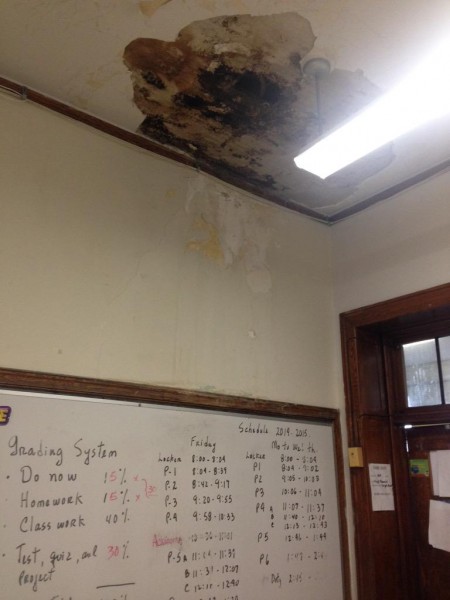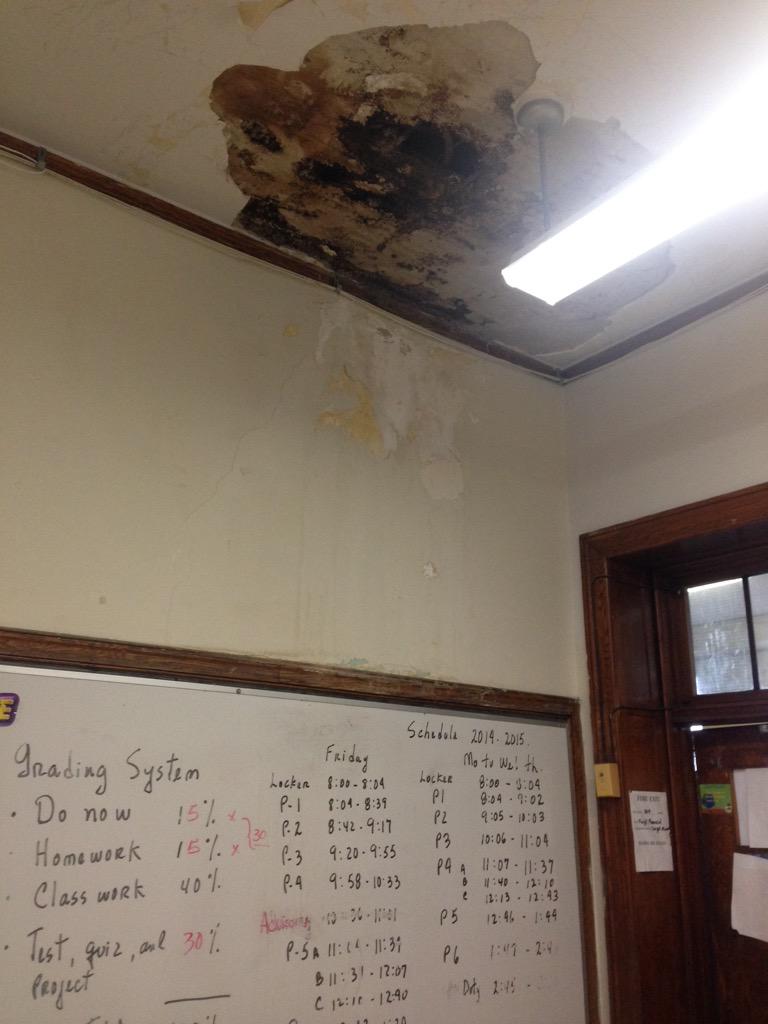
No ground has been broken yet, but it can now be said that the much-maligned moratorium on school construction is officially over.
Governor Gina Raimondo today launched the new School Building Authority Capital Fund, a $20 million line item in the 2016 budget that will go to fixing Rhode Island’s aging and too often decrepit school buildings.
“We know our kids can’t learn in crumbling school buildings and that they must have access to a learning environment that inspires them to do their best,” said Raimondo according to a press release. “Today, we are hitting our school building challenges head on. With this plan, kids and teachers will get better schools and our construction crews will get back to work.”
Following a news conference, superintendents and other public school officials attended a workshop on how to apply for the new funds. Applications are due September 10, said education department spokesman Elliot Krieger. Then RIDE will begin the process of awarding the money for local school construction projects.
“For so many Rhode Islanders, success starts in the classroom, and it is my priority to make those classrooms the safe, creative, and challenging learning environments our kids deserve,” said state Education Commissioner Ken Wagner. “We are fortunate to have leaders who understand that investments in education are an investment in our future.”
Since 2011 there has been a moratorium on school construction in Rhode Island. Social justice and education activists blamed the lack of investment as a contributing factor to the education gap, and construction workers said the moratorium stood in the way of good jobs building positive additions to the community.
This year, RI Future and NBC 10, among others, have published pictures and accounts of the sub-par sometimes even dangerous conditions of urban schools. Aaron Apps called it a “kind of slow, horrible violence being done against the students and teachers expected to occupy these buildings.” The Providence Student Union held a high profile rally in March to lobby state officials to lift the moratorium. Raimondo proposed lifting the moratorium and establishing the $20 million account in her budget, ad the idea was left in by the state legislature.
Dan Lawlor has said Raimondo’s proposal is inferior to the model used in Massachusetts.



